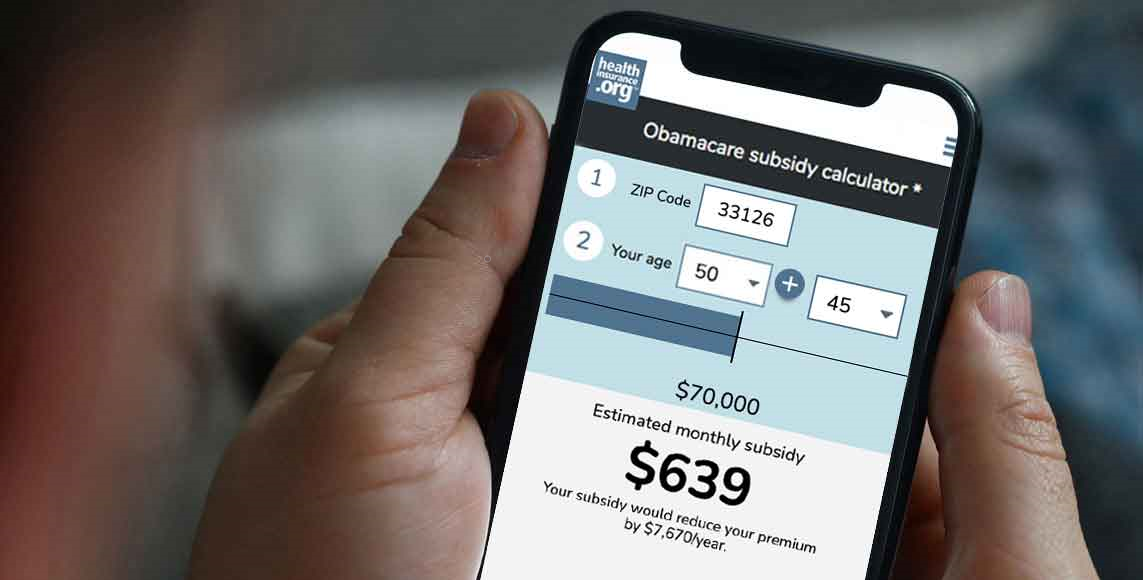Medicare in Alaska

Nearly all Alaska beneficiaries have Original Medicare, and there are no longer any individual Medicare Advantage plans available in the state as of 2024
Key Takeaways
- Medicare enrollment in Alaska stands at over 117,000 residents1 – only about 15% of the population.2 This is compared to over 67 million Medicare recipients nationwide,3 which is more than 17% of the population.4
- Individual Medicare Advantage plans are not available in the state of Alaska5 (some employers, including the Alaska state government, use group Medicare Advantage plans for retirees).6 There were two Medicare Advantage plans available to individuals in some areas of Alaska for 2022 and 2023, but they are no longer available for 2024.7
- 14 private insurers offer Medigap plans in Alaska,8 and the state’s high-risk pool offers Medigap coverage to those under age 65 who qualify.9 In addition, one of the private Medigap insurers offers a plan for those under 65.10
- There are 19 stand-alone Part D prescription plans available in Alaska for 2024.11 More than 74,000 beneficiaries were enrolled in them in 2023.3

Medicare enrollment in Alaska
Medicare enrollment in Alaska stood at over 117,000 people as of June 2024.1 Alaska has the country’s third-lowest population,12 but the smallest state population enrolled in Medicare.13 Alaska’s Medicare beneficiaries make up about 15% of the state’s total population,2 whereas Medicare beneficiaries account for about 17% of the US population, which totals over 67 million Medicare recipients.3
This makes sense, given that the percentage of Alaska’s residents who are age 65 or older is among the lowest in the country based on total population.14 But the Alaska Commission on Aging reported that 2019-2020 was the ninth year in a row that Alaska had the fastest-growing population of residents age 65+ in the nation. Alaska’s older population increased in all regions across the state from 2010 to 2022 so Alaska may eventually catch up with the rest of the country in terms of the percentage of the state’s population with Medicare coverage.15
Nationwide, about 89% of Medicare beneficiaries are eligible due to being at least 65 years old, while about 11% are eligible due to disability.3 In Alaska, nearly 9% of Medicare beneficiaries are eligible as a result of a disability, while the rest are eligible due to being at least 65 years old.1
Find Medicare plans that fit your needs.
Enroll in a plan today.



Explore our other comprehensive guides to coverage in Alaska

We’ve created this guide to help you understand the Alaska health insurance options available to you and your family, and to help you select the coverage that will best fit your needs and budget.


Hoping to improve your smile? Dental insurance may be a smart addition to your health coverage. Our guide explores dental coverage options in Alaska.


Learn about Alaska’s Medicaid expansion, the state’s Medicaid enrollment and Medicaid eligibility.


Short-term health plans provide temporary health insurance for consumers who may find themselves without comprehensive coverage. Learn more about short-term plan availability in Alaska.

Frequently asked questions about Medicare in Alaska
What is Medicare Advantage?
The vast majority of beneficiaries enrolled in Medicare in Alaska have coverage under Original Medicare.16 There are no individual Medicare Advantage plans for sale in Alaska as of the 2024 plan year.5
There were two Medicare Advantage plans available in Alaska in 2022 and 2023, both of which were Medicare Savings Account plans (here’s how those work; note that this is not the same thing as a Medicare Savings Program, which is an assistance program available based on income and run by each state’s Medicaid office).17
But as of the 2024 plan year, there are no individual Medicare Advantage plans available in Alaska.7 There are, however, some employer-sponsored Medicare Advantage plans (EGWPs) that cover some retirees in Alaska, including retired state employees.6
As of June 2024, more than 2% of Alaska’s Medicare beneficiaries had Medicare Advantage plans, including EGWPs (but not counting supplemental private Medigap and Part D plans). That amounted to about 2,900 people out of more than 117,000 total Medicare beneficiaries in the state.1
What are Medigap plans?
Medigap plans are used to supplement Original Medicare, covering some or all of the out-of-pocket costs (for coinsurance and deductibles) that people would otherwise incur if they only had Original Medicare on its own.
Medigap plans are standardized under federal rules, so the benefits they provide are governed at the federal level and do not vary from one insurer to another or from one state to another (with the exception of three states that have waivers allowing them to standardize the plans differently). Under federal rules, Medicare beneficiaries have a six-month guaranteed-issue enrollment window for Medigap plans that starts when they turn 65 and enroll in Medicare Part B. But federal rules don’t guarantee access to Medigap plans if a person is under 65 years old and enrolled in Medigap as a result of a disability.
The majority of the states have adopted rules to ensure at least some access to Medigap plans for enrollees under the age of 65, but Alaska is not one of them. As of 2020, only one Medigap insurer in Alaska — United American Insurance Company — voluntarily offers a limited selection of Medigap plans to enrollees under the age of 65, with prices that are significantly higher than the prices for a person who is 65. However, Alaska has kept its high-risk pool (the Alaska Comprehensive Health Insurance Association, also known as ACHIA) operational, and the pool serves as a backstop for people who are under 65 and in need of coverage to supplement Medicare.
Prior to the Affordable Care Act (ACA), many states relied on high-risk pools for people who needed to purchase their own health insurance and couldn’t qualify for coverage due to medical underwriting. Some states, including Alaska, still have an operational high-risk pool — and Medigap access is part of the reason ACHIA and similar programs in other states are still offering coverage (other states that have maintained their high-risk pools and use them to offer supplemental coverage to Medicare beneficiaries include Iowa, New Mexico, North Dakota, South Carolina, Washington, and Wyoming).
Although the ACA eliminated medical underwriting in the individual health insurance market, it did not change anything about the rules relating to Medigap coverage. Medigap applications are medically underwritten if people apply for Medigap before they’re 65 (and their state doesn’t have a guaranteed-issue rule for that population) or if they apply after their initial enrollment window ends and they don’t have one of the qualifying events that trigger a guaranteed-issue window for eligibility.
As of 2023, only one private Medigap insurer in Alaska voluntarily offers a limited selection of Medigap plans to enrollees under the age of 65, with prices that are significantly higher than the prices for a person who is 65 or older.10
What is Medicare Part D?
Original Medicare does not cover outpatient prescription drugs. But beneficiaries of Medicare in Alaska can get coverage for prescription drugs via an employer-sponsored plan (offered by a current or former employer) or stand-alone Medicare Part D plans. In most areas of the country, Medicare Advantage plans are another option, since most Medicare Advantage plans include integrated Part D prescription coverage. Alaska does not offer Medicare Advantage plans for individuals.
For 2024 coverage, insurers are offering 19 stand-alone Part D plans to people who reside in Alaska,11 with premiums ranging from $3.50 to $110.40 per month.18
The Medicare Part D enrollment window runs from October 15 to December 7 each year, with coverage changes taking effect January 1. Medicare beneficiaries are encouraged to use Medicare’s plan finder tool (available at Medicare.gov) to compare the available options for the coming year and see how each plan would cover their own personal prescription needs.
As of July 2023, there were more than 74,000 Alaska Medicare beneficiaries covered by stand-alone Medicare Part D prescription drug plans.3
How does Medicaid provide financial assistance to Medicare beneficiaries in Alaska?
Many Medicare beneficiaries receive financial assistance through Medicaid with the cost of Medicare premiums, prescription drug expenses, and services not covered by Medicare – such as long-term care.
Our guide to financial assistance for Medicare enrollees in Alaska includes overviews of these benefits, including Medicare Savings Programs, long-term care coverage, and eligibility guidelines for assistance.
What additional resources are available for Medicare beneficiaries and their caregivers in Alaska?
If you have questions about Medicare enrollment in Alaska or Medicare eligibility in Alaska, you can contact the Alaska State Health Insurance Assistance Program with questions related to Medicare coverage in Alaska.
The Alaska Department of Health and Social Services, Senior and Disability Services can also provide a variety of helpful information and assistance for Medicare beneficiaries in Alaska. Here is the Medicare Information Office page on their website.
The Alaska Division of Insurance oversees and regulates insurance companies that offer plans in the state (including Medigap insurers) as well as the agents and brokers who sell the policies. Their office can provide assistance and information to consumers and address complaints and inquiries about the entities they regulate.
Louise Norris is an individual health insurance broker who has been writing about health insurance and health reform since 2006. She has written dozens of opinions and educational pieces about the Affordable Care Act for healthinsurance.org.
Footnotes
- “Medicare Monthly Enrollment – Alaska.” Centers for Medicare & Medicaid Services Data. June 2024. ⤶ ⤶ ⤶ ⤶
- “U.S. Census Bureau Quickfacts: Alaska.” United States Census. Accessed October, 2024. ⤶ ⤶
- “Medicare Monthly Enrollment.” Centers for Medicare & Medicaid Services Data. June 2024. ⤶ ⤶ ⤶ ⤶ ⤶
- “U.S. Census Bureau Quickfacts: United States.” United States Census, Accessed October, 2024. ⤶
- “Medicare Part C (Medicare Advantage Plans).” State of Alaska. Accessed October, 2024. ⤶ ⤶
- ”Employer Group Waiver Plan” Alaska Department of Administration; Divison of Retirement and Benefits. Accessed November, 2023. ⤶ ⤶
- ”Medicare Advantage 2024 Spotlight: First Look” KFF. November 2023. ⤶ ⤶
- “Medicare in a NUTSHELL 2023 – PDF .” Page 2. Alaska Department of Health. Accessed July 6, 2023. ⤶
- “Consumer Guide to Medicare Supplement Insurance – PDF.” Page 16. State of Alaska. Accessed July 6, 2023. ⤶
- “Find a Medicare Plan.” Medicare.gov. Accessed July 6, 2023. ⤶ ⤶
- “Fact Sheet: Medicare Open Enrollment in Alaska” Centers for Medicare and Medicaid Services. September 2023. ⤶ ⤶
- “State Population Totals and Components of Change: 2020-2022.” Census.gov, accessed October, 2024. ⤶
- “Total Number of Medicare Beneficiaries by Type of Coverage.” Kaiser Family Foundation, accessed October, 2024. ⤶
- “Which U.S. States Have the Oldest Populations?” Population Reference Bureau, December 22, 2021. ⤶
- “Senior Snapshot 2022.” Alaska Commission on Aging, March 6, 2023. ⤶
- “Total Number of Medicare Beneficiaries by Type of Coverage.” Kaiser Family Foundation, Accessed October, 2024. ⤶
- “Help with Medicare Costs.” State of Alaska. Accessed October, 2024. ⤶
- “Medicare Part D Prescription Drug Coverage – 2024 Alaska Options.” State of Alaska. Accessed November, 2023. ⤶









